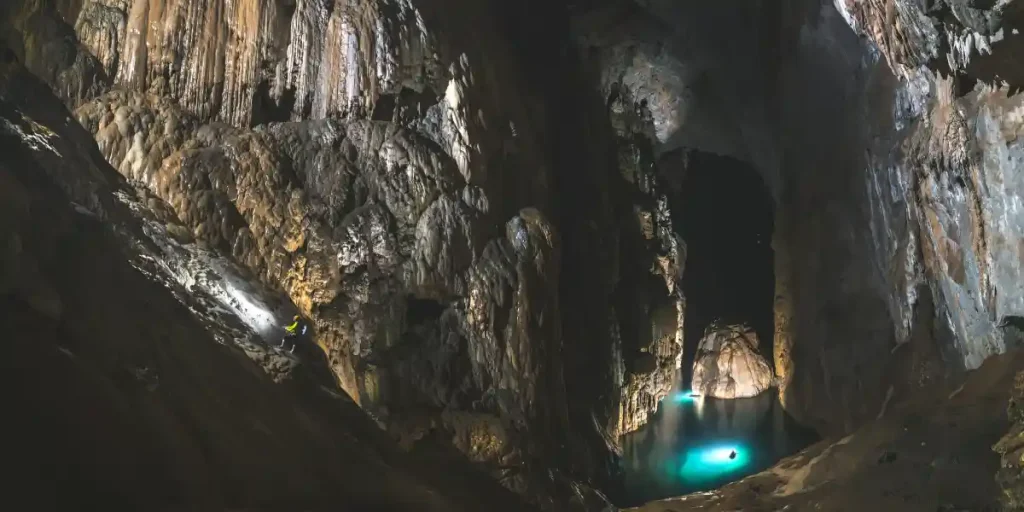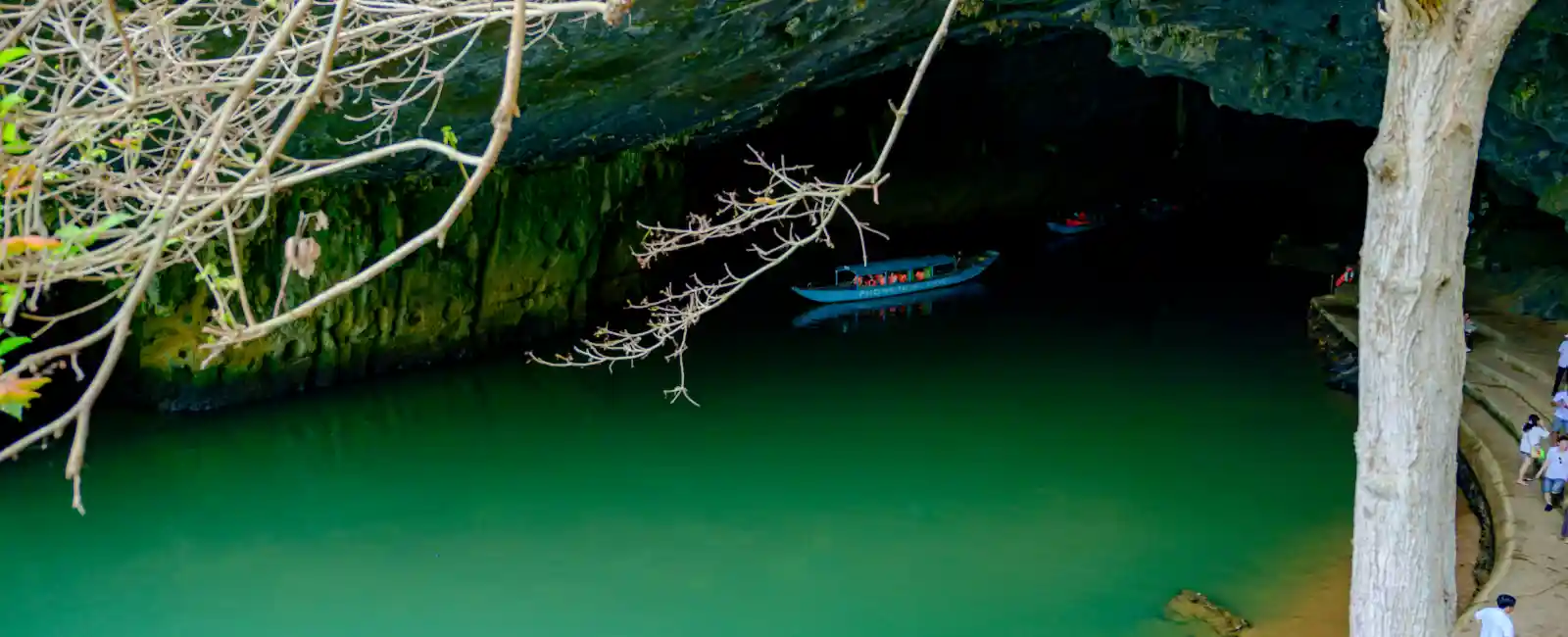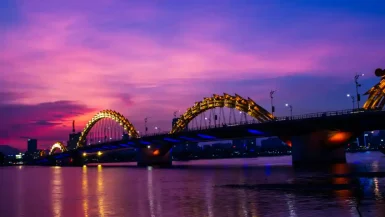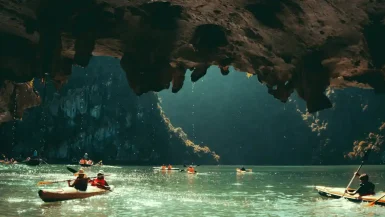Phong Nha-Ke Bang National Park is a UNESCO World Heritage site. It is located in Quang Binh Province, central Vietnam. The park covers over 885 square kilometers. It boasts breathtaking landscapes, diverse ecosystems, and spectacular cave systems.
Historical Background
Phong Nha-Ke Bang’s history dates back millions of years. The park’s karst landscape formed over 400 million years ago. It is one of the oldest major karst areas in Asia. The region played a crucial role during the Vietnam War. Soldiers used the park’s caves for shelter and storage. In 2003, UNESCO recognized Phong Nha-Ke Bang for its geological significance.
Geographical Features
The park is characterized by limestone karsts and lush tropical forests. Towering peaks and deep valleys dominate the landscape. The park’s unique terrain results from tectonic activity and erosion. These geological processes created an extensive cave system.
The Magnificent Cave Systems
Phong Nha-Ke Bang National Park is famous for its caves. The park boasts over 300 caves, many still unexplored. The most famous cave is Son Doong. It is the largest cave in the world. Hang En, Paradise Cave, and Phong Nha Cave are other notable caves.
Son Doong Cave
Son Doong Cave is the crown jewel of Phong Nha-Ke Bang. Discovered in 1991, it opened to tours in 2013. The cave measures over 5 kilometers long and 200 meters high. It contains its own river, jungle, and climate. A tour of Son Doong is a once-in-a-lifetime adventure. Only a few hundred people can visit each year. This limited access helps preserve its pristine condition.

Paradise Cave
Paradise Cave is another must-see attraction. Discovered in 2005, it is 31 kilometers long. This makes it one of Asia’s longest dry caves. The first kilometer is open to tourists. The cave features stunning stalactites and stalagmites. Visitors can walk along wooden pathways and marvel at the formations.
Phong Nha Cave
Phong Nha Cave is the park’s namesake. It is the most accessible cave in the park. Tourists can reach it by boat along the Son River. The cave extends for 7,729 meters. It features impressive rock formations and underground rivers. Phong Nha Cave has historical significance as well. During the Vietnam War, it served as a hospital and ammunition depot.
Hang En Cave
Hang En Cave is the third largest cave in the world. It serves as a gateway to Son Doong. The cave features a unique campsite inside its cavern. Adventurers can enjoy a night in this extraordinary setting. Hang En Cave is known for its vast chambers and emerald-green pools.
Flora and Fauna
Phong Nha-Ke Bang National Park is a biodiversity hotspot. The park’s diverse ecosystems support many species. It is home to over 2,500 plant species. The park’s forests are lush and vibrant. They include evergreen, semi-evergreen, and deciduous varieties.
The park’s fauna is equally diverse. It hosts over 600 vertebrate species. These include 113 mammals, 81 reptiles, and 302 birds. Notable species include the Asian black bear, the Indian elephant, and the Ha Tinh langur. The park also shelters many endemic and endangered species.
Activities and Attractions
Phong Nha-Ke Bang National Park offers a range of activities. Visitors can explore the caves, hike the trails, and observe wildlife. The park provides opportunities for adventure and relaxation.
Cave Exploration
Cave exploration is a highlight of any visit. Guided tours offer safe and informative experiences. Son Doong Cave tours are exclusive and challenging. Paradise Cave and Phong Nha Cave are accessible and stunning. Hang En Cave offers a unique camping experience.
Hiking and Trekking
The park features numerous hiking and trekking routes. These trails vary in difficulty and length. The Nuoc Mooc Eco Trail is a popular choice. It offers an easy walk through lush forests and over bamboo bridges. For a more challenging trek, try the Sinh Ton Valley and Hang Thuy Cung route. This trek takes you through dense jungle and to hidden caves.
Wildlife Watching
Wildlife watching is another exciting activity. The park’s diverse habitats support many species. Birdwatchers can spot rare and colorful birds. Mammal sightings are possible, though more elusive. Guided tours can enhance your chances of seeing wildlife.
River Cruises
A river cruise is a relaxing way to enjoy the scenery. The Son River flows through the park. Boat tours can take you to caves and along picturesque stretches. These cruises offer a peaceful perspective of the park’s beauty.
Accommodation and Facilities
Phong Nha-Ke Bang National Park has accommodation options. Phong Nha town is the main gateway to the park. It offers a range of hotels, guesthouses, and homestays. Many accommodations cater to different budgets and preferences.
Phong Nha Farmstay
Phong Nha Farmstay is a popular choice. It offers comfortable rooms and stunning views. The farmstay is located in the countryside, providing a peaceful retreat.
Oxalis Adventure Tours
Oxalis Adventure Tours offers unique accommodation. They provide campsites inside Hang En Cave. This allows adventurers to sleep in a cave setting. Oxalis also offers eco-friendly bungalows in Phong Nha town.
Practical Information
Before visiting Phong Nha-Ke Bang, consider practical information. The best time to visit is from February to August. This period has the most favorable weather. September to January is the rainy season, making some areas inaccessible.
How to Get There
Phong Nha-Ke Bang National Park is accessible by various means. The nearest city is Dong Hoi, about 50 kilometers away. Dong Hoi has an airport and train station. From Dong Hoi, you can take a bus, taxi, or motorbike to Phong Nha town.
Entrance Fees and Permits
Entrance fees and permits are required for the park. Fees vary depending on the attractions and activities. Guided tours include the necessary permits. It’s important to book tours in advance, especially for Son Doong Cave.
Conservation Efforts
Phong Nha-Ke Bang National Park faces conservation challenges. Deforestation, poaching, and tourism impact the park. Conservation efforts aim to protect the park’s biodiversity. The government and NGOs collaborate on these efforts.
Forest Protection
Forest protection in Phong Nha-Ke Bang National Park is a critical aspect of conservation. The park’s forests are home to diverse flora and fauna. Protecting these forests ensures the survival of many species. Forest protection also maintains the ecological balance and supports local communities.
Rangers and Patrols
Rangers play a vital role in forest protection. They patrol the park to prevent illegal activities. These activities include logging, hunting, and land encroachment. Rangers are trained to handle various challenges. Their presence deters illegal activities and ensures enforcement of regulations. They often face difficult and dangerous conditions, highlighting their dedication.
Anti-Poaching Efforts
Poaching poses a significant threat to wildlife. Anti-poaching efforts are essential to protect endangered species. Rangers monitor and dismantle traps set by poachers. They also conduct regular patrols in poaching hotspots. Collaboration with local communities helps gather information on poaching activities. Education and awareness campaigns aim to reduce poaching by highlighting its negative impacts.
Reforestation Projects
Reforestation projects help restore damaged areas. These projects involve planting native tree species. Reforestation improves biodiversity and soil health. It also helps combat climate change by sequestering carbon. Community involvement is crucial in these projects. Local residents participate in planting and caring for the trees. This fosters a sense of ownership and responsibility.
Community Engagement
Engaging local communities is vital for forest protection. Many residents depend on the forest for their livelihoods. Sustainable alternatives help reduce reliance on forest resources. Ecotourism and sustainable agriculture are promoted. These alternatives provide income while protecting the forest. Education programs raise awareness about the importance of conservation. Workshops and training sessions equip locals with skills for sustainable practices.
Technology in Forest Protection
Technology enhances forest protection efforts. Satellite imagery and drones monitor forest cover. These tools help detect illegal activities and assess forest health. GPS and mobile apps assist rangers in patrolling and reporting incidents. Data from these technologies guide decision-making and resource allocation.
Partnerships and Collaboration
Partnerships and collaboration strengthen forest protection. The government, NGOs, and international organizations work together. These collaborations provide funding, expertise, and resources. Joint efforts ensure a comprehensive approach to conservation. Programs like the Global Environment Facility and the World Bank support forest protection initiatives.
Wildlife Conservation
Wildlife conservation is crucial. Anti-poaching measures are in place. Rescue centers care for injured and orphaned animals. Education programs raise awareness about wildlife protection.
Sustainable Tourism
Sustainable tourism is promoted in the park. Tour operators follow eco-friendly practices. Visitors are encouraged to respect the environment. Efforts aim to balance tourism and conservation.
Cultural Significance
The cultural significance of Phong Nha-Ke Bang National Park adds a rich layer to its natural beauty. The ethnic minority communities of the park have preserved their unique traditions and lifestyles, offering visitors a glimpse into Vietnam’s diverse cultural tapestry. Through homestays, village tours, and festivals, tourists can engage with local culture and gain a deeper appreciation for the region’s heritage. Efforts to preserve and promote this cultural legacy are essential, ensuring that the traditions of the Bru-Van Kieu, Chut, and Arem people continue to thrive. By fostering cultural understanding and sustainable tourism, Phong Nha-Ke Bang remains a vital and vibrant part of Vietnam’s cultural and natural landscape.
Cultural Experiences for Visitors
Phong Nha-Ke Bang offers visitors the opportunity to immerse themselves in the local culture.
Homestays
Homestays are a popular way for tourists to experience local culture firsthand. Visitors stay with local families, sharing their homes and daily routines. This experience allows tourists to learn about traditional practices, such as farming, cooking, and crafts. Homestays also provide an opportunity to enjoy traditional meals, prepared with fresh, local ingredients.
Village Tours
Guided village tours offer an educational experience, highlighting the cultural heritage of the ethnic groups. These tours often include visits to traditional houses, community centers, and local markets. Visitors can witness cultural performances, such as music and dance, and participate in hands-on activities like weaving or pottery making.
Cultural Festivals
Attending a local festival is a memorable way to experience the vibrant culture of Phong Nha-Ke Bang. Festivals are held throughout the year, celebrating various aspects of life, nature, and spirituality. These events are marked by colorful costumes, lively music, and traditional dances. Festivals provide a festive atmosphere where visitors can interact with locals and gain a deeper appreciation of their customs.
Cultural Preservation Efforts
Efforts to preserve and promote the cultural heritage of Phong Nha-Ke Bang are ongoing. The government, NGOs, and local communities work together to protect traditional practices and knowledge.
Education and Awareness
Education programs aim to raise awareness about the importance of cultural preservation. Schools in the region incorporate local history and traditions into their curricula. Community workshops and events also promote cultural awareness among both locals and visitors.
Sustainable Tourism
Sustainable tourism practices help protect the cultural heritage of Phong Nha-Ke Bang. Tour operators follow guidelines to ensure respectful and responsible interactions with local communities. Tourism revenue supports cultural preservation projects, such as restoring traditional houses and funding cultural festivals.
Documentation and Research
Documenting the cultural practices and traditions of the ethnic minority groups is crucial for preservation. Researchers work with local communities to record oral histories, traditional knowledge, and cultural artifacts. This documentation serves as a valuable resource for future generations and helps safeguard cultural heritage.
Bru-Van Kieu Ethnic Group
The Bru-Van Kieu is one of the ethnic groups in the park. They have a rich cultural heritage. Their traditional practices include farming, weaving, and music. Visitors can experience their culture through village tours.
Future Prospects
Phong Nha-Ke Bang National Park has promising prospects. Ongoing research and exploration continue to reveal new wonders. Conservation efforts aim to preserve the park for future generations. Sustainable tourism supports local communities and the environment.
Conclusion
Phong Nha-Ke Bang National Park is a natural wonder. Its stunning landscapes, diverse ecosystems, and spectacular caves attract visitors worldwide. The park offers a range of activities, from cave exploration to wildlife watching. Conservation efforts are crucial to protect this unique environment. A visit to Phong Nha-Ke Bang is an unforgettable experience, showcasing the beauty and richness of Vietnam’s natural heritage.



